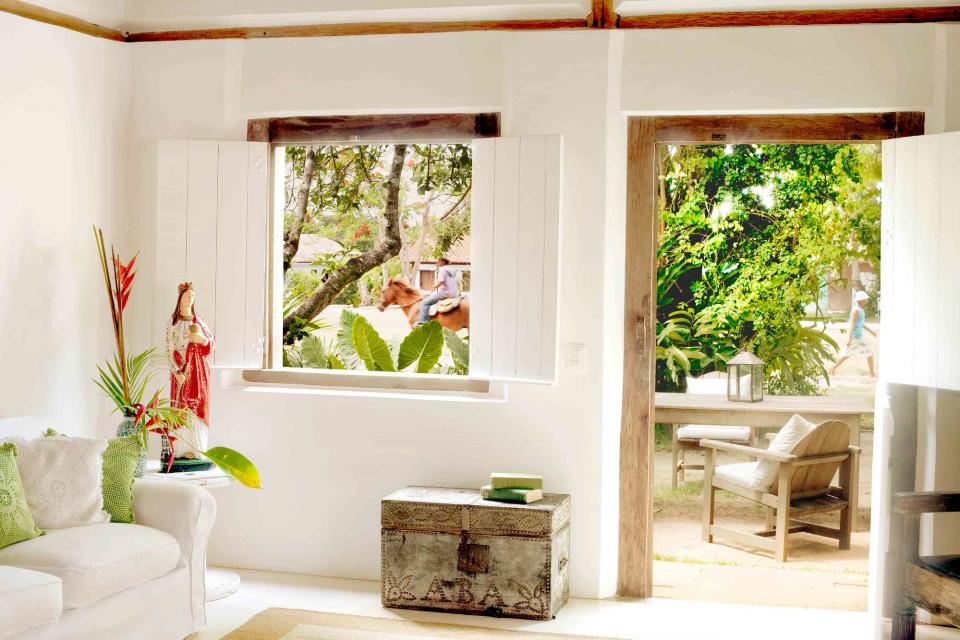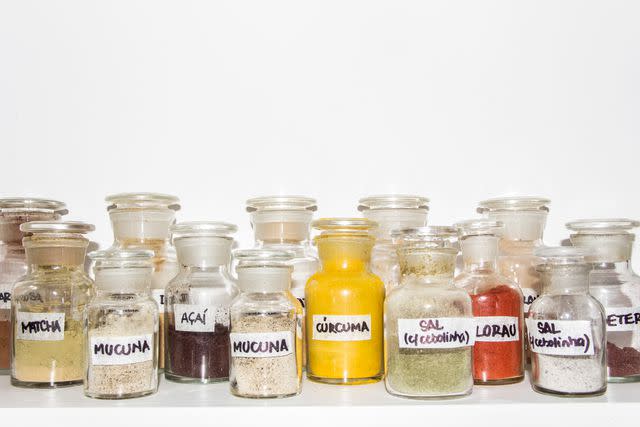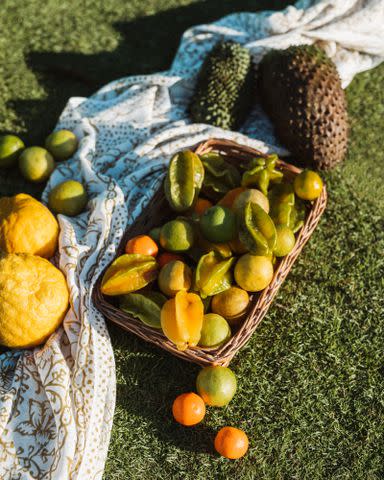There's a Food Lab Hiding Inside This Stunning Hotel on the Coast of Brazil — and Its Chocolate Is Worth the Trip Alone
On UXUA's lush property, you'll find beautifully re-finished historic houses and a lab that's fighting food waste.

Courtesy of UXUA
When you book a luxury stay on the coast of Brazil, you might be expecting a sprawling resort with seaside Champagne service. What you’ll find at UXUA Casa Hotel & Spa is a decidedly different experience, but instead, something much more rare.
This boutique hotel is made up of an array of repurposed colonial casas, many of which have been part of the surrounding community for decades. Nestled right in the heart of Trancoso, a beach town in the state of Bahia, some of the houses are directly on the grassy square that acts as the center for local nightlife. The individual casas each have a distinct personality and design, like the clean white walls and furniture, indigo blue accents, private garden, and plunge pool that defined my own house, Seu Irênio. This bohemian energy and sense of innovation extend beyond the decor and into the hotel’s food, too.
Thanks to UXUA’s privileged location, it has unparalleled access to the biodiversity of both the coast and Atlantic rainforest. Out of appreciation for the surrounding environments, the property is committed to operating sustainably and celebrating local ingredients. These values manifest not only in the food you’ll enjoy at the hotel’s on-site restaurant and poolside bar but also in the Vida Lab, UXUA’s nutritional research laboratory that’s located amid lush tropical flora, making it all the more alluring to learn about.
Related: 15 Vibrant Brazilian Food and Drink Recipes
Inside, the Vida Lab both does and doesn’t look like a laboratory. The walls are lined with jars of fermenting ingredients, and in the corner sits a large glass apparatus that looks like a siphon, which is, in fact, being used to distill essential oils. The entire operation is housed in a quaint, refurbished bungalow with stained glass on the ceiling and open windows all around, so you can look out at the surrounding trees. The Vida Lab acts as a space for experimentation, where researchers can test everything from methods for repurposing food waste to the potential nutritional benefits of native ingredients.

Courtesy of UXUA
While touring the lab, I sampled a few of the different kombuchas they were brewing, which would be served at the hotel’s bountiful and fresh daily breakfast spread. I also tasted a batch of banana soft serve, complete with freshly roasted cacao nibs on top, that helped use up leftover fruit before it went bad. Because cacao grows throughout Trancoso and in UXUA’s own gardens, it’s often incorporated into dishes and drinks. The lab makes its own chocolate that it offers to guests, and you can sip on a cacao nib gin and tonic at the UXUA Quadrado Restaurant.
Related: How to Unlock Chocolate's Superpowers in Baked Goods, Savory Dishes, and More
The most exciting experiment I tried was a bottle of fermented carrot top pesto; olive oil was added to the leaves after they’d finished fermenting, and the resulting spread was briny, herby, complex, and excellent on a piece of freshly baked bread.
Some of the work in the Vida Lab is purely for educational purposes, exploring what can be learned about ingredients native to the Trancoso area, but many of the findings will end up on your plate at one of the property’s two eateries. The lab’s learnings are also frequently used at UXUA’s spa, where essential oils, fruits, nuts, and more are incorporated into spa products.

Courtesy of UXUA
Beyond its own research, this oasis supports the work of chefs from across the country. The very reason for my travels to UXUA was to attend the Organic Festival Trancoso, an annual event that brings together producers, growers, NGOs, tourists, Trancoso residents, and chefs to talk about sustainable and healthy food systems, all while they savor some great meals. I was lucky enough to participate in a lunch made by renowned chef Roberta Sudbrack, who served simmering bowls of beef and cassava stew, cooked over live fire and topped with local buffalo stracciatella. At almost every event during the festival, I had a juicy, crisp glass of Vivente wine in hand (this Brazilian natural wine producer makes bottles so delicious I snuck some back in my suitcase, and I’m lamenting that I can’t buy them in the United States yet).
Related: Natural Wine 101: An Explainer on Low-Intervention Wine
My stay culminated with a picnic on Trancoso’s historic quadrado, the aforementioned grassy center of town, which sits perched above the beach. As town residents, tourists, and people from the food industry all gathered together to sample the bites that chefs had whipped up, what I’d witnessed throughout the festival became even more clear. Everyone in attendance wanted the same things: to talk about the future of food and enjoy great dishes that highlight local ingredients. Once I returned to my tiny Brooklyn apartment and was reminiscing on all the cacao and cachaca I’d consumed, I found that UXUA had rubbed off on me, and I was inspired to talk about the exact same things.
For more Food & Wine news, make sure to sign up for our newsletter!
Read the original article on Food & Wine.

